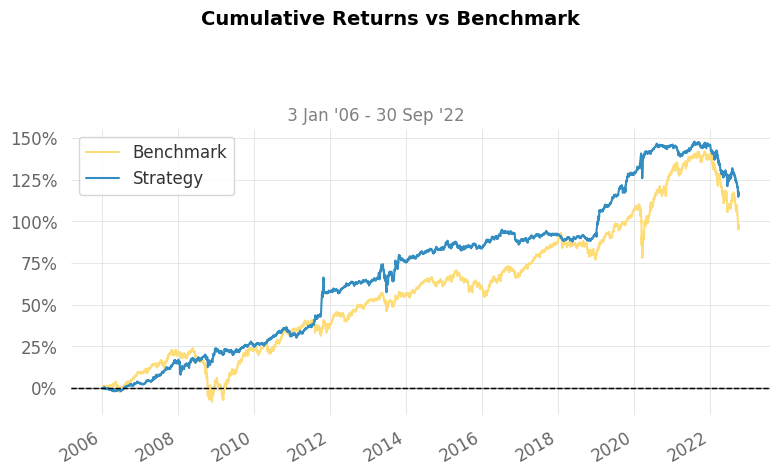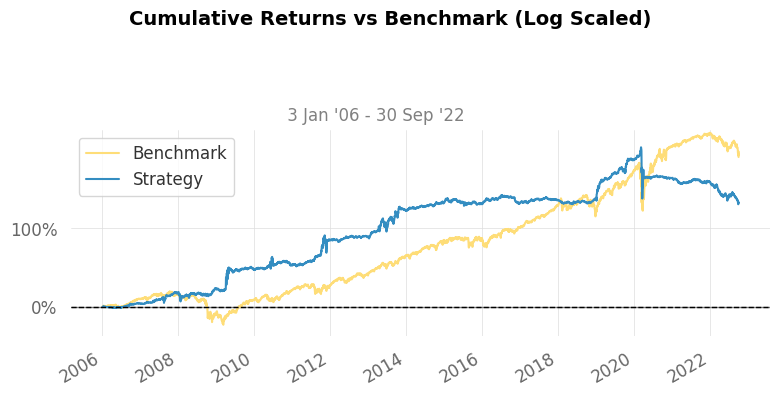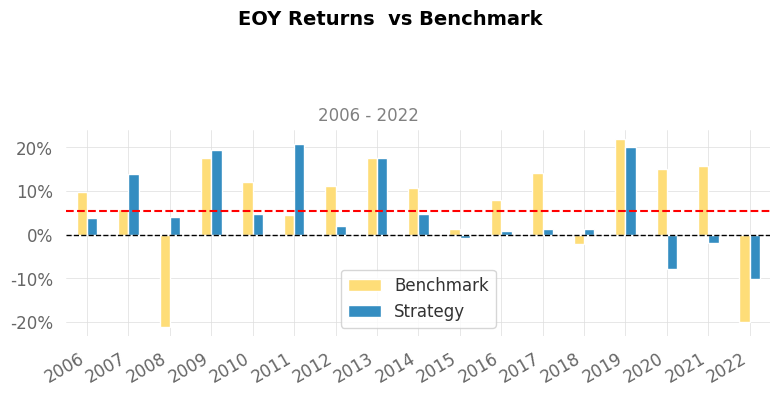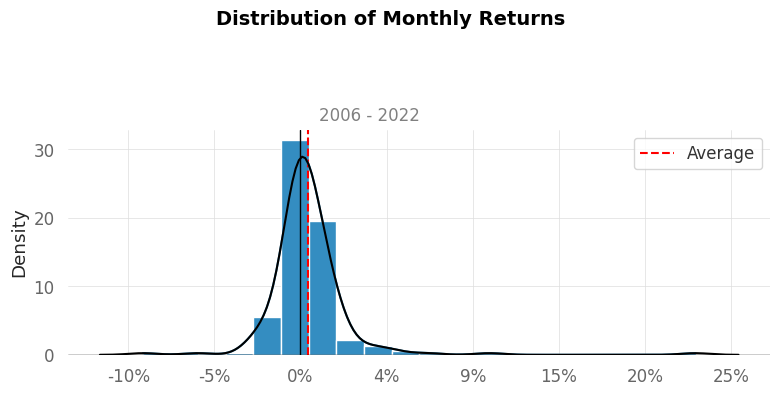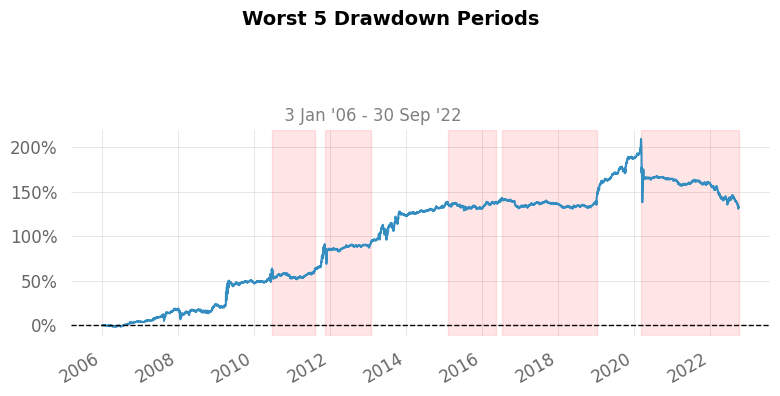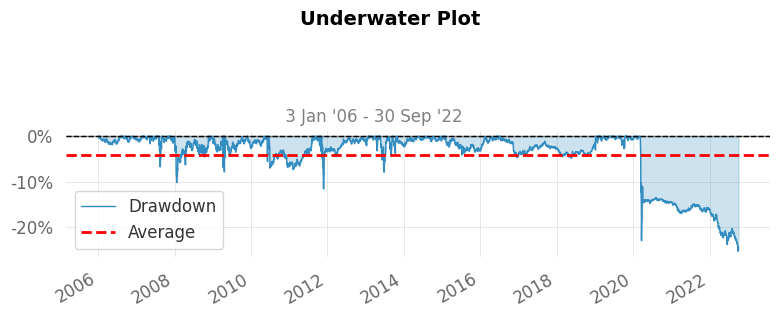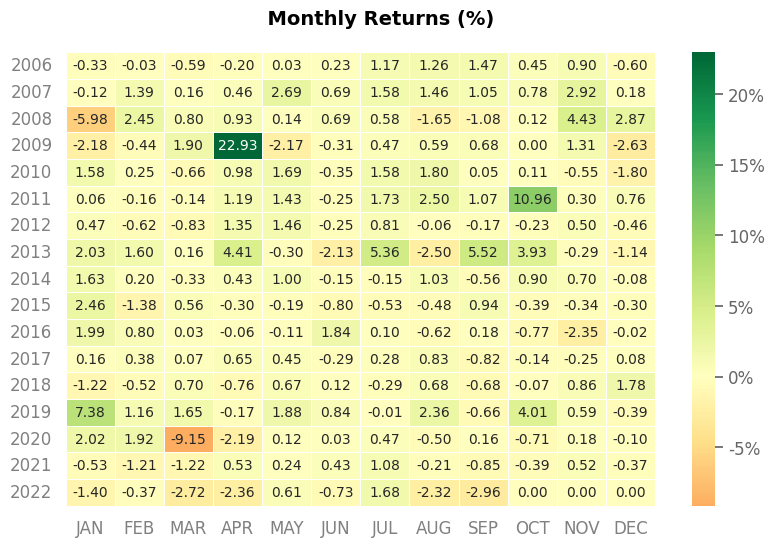This post is about application of Relative(Cross-Sectional) Momentum in Vigiliant Asset Allocation to financial investors.
What is Momentum
Momentum is defined as product of the mass of a particle and its velocity. Momentum is a vector quantity; i.e., it has both magnitude and direction. From Newton’s second law it follows that, if a constant force acts on a particle for a given time, the product of force and the time interval (the impulse) is equal to the change in the momentum. Conversely, the momentum of a particle is a measure of the time required for a constant force to bring it to rest. Definition of Momentum
In finance domain, momentum means price movement trend. Stock price literally do “work” by forces (probably by market participants). If forces act on stock price, it will move up or down. If stock price move(both with magnitude and quantity) by forces. So, Mid-term momentum means stock price movement trend for mid-term period and Long-term means stock price movement trend for long-term period. Direction can be either postive to negative.
Define Momentum Score VAA
Rule is simple, VAA momentum score is time weighted momentum score. More weight to recent momentum and less weight to past.
Stock Price At Time(t) = $ Y_t $
12 Month Momentum= $\frac{Y_t}{Y_(t-12)} - 1$
6 Month Momentum= $\frac{Y_t}{Y_(t-6)} - 1$
3 Month Momentum= $\frac{Y_t}{Y_(t-3)} - 1$
1 Month Momentum= $\frac{Y_t}{Y_(t-1)} - 1$
$ M_i $ = Vigiliant Asset Allocation Momentum Score
$ M_i $ = 12x(1 Month Momentum) + 4x(3 Month Momentum) + 2x(6 Month Momentum) + 1x(12 Month Momentum)
If VAA Momentum scores of all offensive asset classes are postive, build portfolio with offensive asset classes. If any of these score shows negative score, escape to Defensive Assets.
Who invented this idea?
Prof. Wouter J. Keller invented this strategy at 2017. You can see original paper in SSRN. this is revised version of VAA strategy(2017).
You can download orignal paper in below url.
paper
I used index data from major index maker. All index are available in ETF(Exchange Traded Fund) form and can be traded easily.
1
2
3
4
5
6
7
8
9
10
11
# Offensive Assets
IVV : iShares Core S&P 500 ETF 2000-05-15
VEA : Vanguard FTSE Developed Markets ETF 2007-07-02
VWO : Vanguard FTSE Emerging Markets ETF 2005-03-04
LQD : iShares iBoxx $ Investment Grade Corporate Bond ETF 2002-07-22
# Defensive Assets
SHY : iShares 1-3 Year Treasury Bond ETF 2002-07-22
IEI : iShares 3-7 Year Treasury Bond ETF 2007-01-05
BND : iShares 7-10 Year Treasury Bond ETF 2002-07-22
TIP : iShares TIPS Bond ETF 2003-12-04
Strategy Overview _ VAA
1
2
3
4
5
6
7
8
9
10
11
Strategy Benchmark
------------------------- ---------- -----------
Start Period 2013-01-31 2013-01-31
End Period 2022-03-31 2022-03-31
Cumulative Return 17.84% 88.37%
CAGR﹪ 1.81% 7.15%
Sharpe 3.18 5.3
Expected Shortfall (cVaR) -1.09% -2.3%
Max Drawdown -4.33% -6.86%
Full Code
You can see full code in here CODE
Let’s code this idea
Vigiliant Asset Allocation with relative Momentum Criterion in multiple asset classes via python code.
1
2
3
4
5
6
7
8
9
10
11
12
13
14
15
16
17
18
19
20
21
22
23
24
25
26
27
28
29
30
31
32
33
34
35
36
37
38
39
40
41
42
43
44
45
46
47
48
49
50
51
52
53
54
55
56
57
58
59
60
61
62
63
64
65
66
67
68
69
70
71
72
73
74
75
76
77
78
79
80
81
82
83
84
85
86
87
88
89
90
91
92
93
94
95
96
97
98
99
100
101
102
103
104
105
106
107
108
109
110
111
112
113
114
115
116
117
118
119
120
121
122
123
124
125
126
127
128
129
130
131
132
133
134
def get_momentum(yld_df):
"""
calculate momentum of sectors. using 12 month, 6 month, 3 month market price of asset
input
yiled_df : dataframe with weekly yield of asset classes
returns : momentum in pandas dataframe format. momentum of each asset classes for give date
"""
momentum = pd.DataFrame(columns = yld_df.columns, index = yld_df.index)
for asset in yld_df.columns:
i = 0
for date in yld_df.index:
# data set consists of weekly data, 52 weeks per year = 12 month per year
if i > windows :
# first 12 month data (52 data points) cannot be used since 12 month lagged returns is required
current = yld_df[asset].iloc[i]
before_1m = yld_df[asset].iloc[i-1]
before_3m = yld_df[asset].iloc[i-3]
before_6m = yld_df[asset].iloc[i-6]
before_12m = yld_df[asset].iloc[i-12]
momentum.loc[date, asset] = 12*(current/before_1m - 1) + 4*(current/before_3m - 1) \
+ 2*(current/before_6m - 1) + 1*(current/before_12m - 1)
else:
momentum.loc[date, asset] = 0
i = i + 1
# abnormal data processing
momentum = momentum.replace([np.inf], 1000)
momentum = momentum.replace([-np.inf], -1000)
momentum = momentum.replace([np.nan], 0)
return momentum
def select_sector(yld_df):
"""
select top 4 offensive sectors if condition satisfied.
If failed to satisfy offensive condition, escape to Defensive strategy.
Criteria: if any of offensive asset classes show negative momentum score, escape to defensive assets.
returns: selected_tickers in list format. list with top 5 momentum in given period`
"""
momentum_df = get_momentum(yld_df)
selected_momentum = pd.DataFrame(
columns=['momentum_1','momentum_2','momentum_3','momentum_4'],
index=momentum_df.index
)
selected_ticker = pd.DataFrame(
columns=['momentum_1','momentum_2','momentum_3','momentum_4'],
index=momentum_df.index
)
print("S&P500 market signal : Total ",momentum_df.count()[0])
print("postive signal : ", momentum_df[momentum_df['IVV'] >= 0]['IVV'].count())
print("negative signal : ", momentum_df[momentum_df['IVV'] < 0]['IVV'].count())
print("Developed market signal : Total ",momentum_df.count()[0])
print("postive signal : ", momentum_df[momentum_df['VEA'] >= 0]['VEA'].count())
print("negative signal : ", momentum_df[momentum_df['VEA'] < 0]['VEA'].count())
print("Emerging market signal : Total ",momentum_df.count()[0])
print("postive signal : ", momentum_df[momentum_df['VWO'] >= 0]['VWO'].count())
print("negative signal : ", momentum_df[momentum_df['VWO'] < 0]['VWO'].count())
print("Corporate bond market signal : Total ",momentum_df.count()[0])
print("postive signal : ", momentum_df[momentum_df['LQD'] >= 0]['LQD'].count())
print("negative signal : ", momentum_df[momentum_df['LQD'] < 0]['LQD'].count())
for date in momentum_df.index:
snp_momentum = momentum_df.loc[date,'IVV']
dev_momentum = momentum_df.loc[date,'VEA']
eme_momentum = momentum_df.loc[date,'VWO']
bnd_momentum = momentum_df.loc[date,'LQD']
short_momentum = momentum_df.loc[date,'SHY']
mid_momentum = momentum_df.loc[date,'IEI']
long_momentum = momentum_df.loc[date,'BND']
tip_momentum = momentum_df.loc[date,'TIP']
if snp_momentum >= 0 and dev_momentum >= 0 and eme_momentum >= 0 and bnd_momentum >= 0:
selected_momentum.loc[date,'momentum_1'] = snp_momentum
selected_ticker.loc[date,'momentum_1'] = 'IVV'
selected_momentum.loc[date,'momentum_2'] = dev_momentum
selected_ticker.loc[date,'momentum_2'] = 'VEA'
selected_momentum.loc[date,'momentum_3'] = eme_momentum
selected_ticker.loc[date,'momentum_3'] = 'VWO'
selected_momentum.loc[date,'momentum_4'] = bnd_momentum
selected_ticker.loc[date,'momentum_4'] = 'LQD'
else:
selected_momentum.loc[date,'momentum_1'] = short_momentum
selected_ticker.loc[date,'momentum_1'] = 'SHY'
selected_momentum.loc[date,'momentum_2'] = mid_momentum
selected_ticker.loc[date,'momentum_2'] = 'IEI'
selected_momentum.loc[date,'momentum_3'] = long_momentum
selected_ticker.loc[date,'momentum_3'] = 'BND'
selected_momentum.loc[date,'momentum_4'] = tip_momentum
selected_ticker.loc[date,'momentum_4'] = 'TIP'
return selected_ticker
def vaa_momentum(yld_df):
"""
returns : market portfolio in pandas dataframe format.
"""
mom_ticker_df = select_sector(yld_df)
mp_table = pd.DataFrame(columns=yld_df.columns, index=yld_df.index)
for date in mom_ticker_df.index:
selected = mom_ticker_df.loc[date].tolist()
for sel in selected:
mp_table.loc[date, sel] = 1/4
mp_table = mp_table.fillna(0)
return mp_table
def trim_data(yld_df, mp_table, benchmark_yield_df):
"""
since momentum strategy uses 12 month lagged momentum, first 12 month data cannot be used
return : yld_df, mp_table, bm_yld in dataframe format
"""
yld_df = yld_df.iloc[windows + 1:]
mp_table = mp_table.iloc[windows + 1:]
benchmark_yield_df = benchmark_yield_df.iloc[windows + 1:]
return yld_df, mp_table, benchmark_yield_df
Full Result
1
2
3
4
5
6
7
8
9
10
11
12
13
14
15
16
17
18
19
20
21
22
23
24
25
26
27
28
29
30
31
32
33
34
35
36
37
38
39
40
41
42
43
44
45
46
47
48
49
50
51
52
53
54
55
56
57
58
59
60
61
62
63
64
65
66
67
68
69
70
71
72
73
74
75
76
Strategy Benchmark
------------------------- ---------- -----------
Start Period 2013-01-31 2013-01-31
End Period 2022-03-31 2022-03-31
Risk-Free Rate 0.0% 0.0%
Time in Market 100.0% 100.0%
Cumulative Return 17.84% 88.37%
CAGR﹪ 1.81% 7.15%
Sharpe 3.18 5.3
Smart Sharpe 3.1 5.17
Sortino 5.26 9.23
Smart Sortino 5.13 8.99
Sortino/√2 3.72 6.52
Smart Sortino/√2 3.62 6.36
Omega 1.69 1.69
Max Drawdown -4.33% -6.86%
Longest DD Days 883 489
Volatility (ann.) 11.94% 27.91%
R^2 0.0 0.0
Calmar 0.42 1.04
Skew -0.12 -0.28
Kurtosis 0.71 0.52
Expected Daily % 0.15% 0.57%
Expected Monthly % 0.15% 0.57%
Expected Yearly % 1.66% 6.54%
Kelly Criterion 32.52% 35.8%
Risk of Ruin 0.0% 0.0%
Daily Value-at-Risk -1.09% -2.3%
Expected Shortfall (cVaR) -1.09% -2.3%
Gain/Pain Ratio 0.69 1.32
Gain/Pain (1M) 0.69 1.32
Payoff Ratio 1.59 1.02
Profit Factor 1.69 2.32
Common Sense Ratio 2.3 2.9
CPC Index 1.58 1.6
Tail Ratio 1.36 1.25
Outlier Win Ratio 5.2 2.14
Outlier Loss Ratio 4.86 1.86
MTD 0.43% 0.35%
3M -1.01% 6.13%
6M -2.08% 6.4%
YTD -1.41% 5.28%
1Y -0.99% 8.87%
3Y (ann.) 4.01% 12.36%
5Y (ann.) 2.92% 8.69%
10Y (ann.) 1.81% 7.15%
All-time (ann.) 1.81% 7.15%
Best Day 2.05% 4.86%
Worst Day -2.06% -4.97%
Best Month 2.05% 4.86%
Worst Month -2.06% -4.97%
Best Year 7.56% 16.03%
Worst Year -3.08% 2.99%
Avg. Drawdown -1.5% -2.51%
Avg. Drawdown Days 262 130
Recovery Factor 4.12 12.87
Ulcer Index 0.01 0.02
Serenity Index 3.84 14.9
Avg. Up Month 0.61% 1.57%
Avg. Down Month -0.38% -1.54%
Win Days % 58.56% 67.57%
Win Month % 58.56% 67.57%
Win Quarter % 64.86% 75.68%
Win Year % 70.0% 100.0%
Beta -0.02 -
Alpha 0.41 -
Strategy Evaluation
As shown above, Vigiliant Asset Allocation strategy shows pretty unsatisfying returns from COVID-19. Also, unlike previous market correction, this strategy couldn’t avoided COVID-19. This makes me suspicious about this strategy. You can find this in underwater plot which shows drawdown. Furthermore, VAA spends most of time in safe assets. But before 2020, this strategy showed above market performance. Considering the fact that the paper is released at 2017, the author of this strategy overfitted to market movement.
Some might say that VAA strategy is working well during 2021-2022 market correction. But this is first market correction after paper is released. So, credibility of this strategy is in question. Furthermore, this strategy shows dramatic turn over. suddenly turn to risky portfolio from risk hedged portfolio.
Some might wonder VAA spend most of their time in safe asset classes. Answer to this question can be found at bond market and emerging market. These two market showed constant underperformance and thus induced risk averse portfolio.
